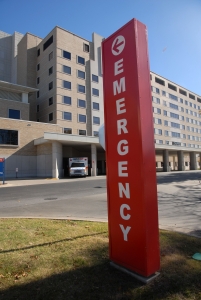 I was in the middle of a life and death crisis, and I had no idea where to turn. Literally, I didn’t know where to turn as I idled at a red light completely disorientated, somewhere in the middle of the godforsaken, concrete jungle known as Boston. Tears pooled on two pieces of paper in my lap; a map to Children’s Hospital and directions to Massachusetts General Hospital (MGH).
I was in the middle of a life and death crisis, and I had no idea where to turn. Literally, I didn’t know where to turn as I idled at a red light completely disorientated, somewhere in the middle of the godforsaken, concrete jungle known as Boston. Tears pooled on two pieces of paper in my lap; a map to Children’s Hospital and directions to Massachusetts General Hospital (MGH).
Earlier that morning, my seven-year-old son had been whisked up to Boston from Falmouth by ambulance. I thought he had been sent to Children’s, and I had said so to some good friends who immediately drove over to our house with a computer map showing me how to get there. As I approached the city, however, I realized that the written directions from Falmouth Hospital said my son had been sent to MGH, not to Children’s. So there I sat with a tear-smeared map to the wrong place, smudged directions to the right place, and not a clue as to where I was in relation to either one.
My emotional condition was not helped by the fact that I had been awake for nearly 48 hours, nor that our emergency room marathon had come on the heels of a distressing church event and an exhausting two-week visit from extended family. Despair, fatigue, and fear wrapped around my thoughts like sweaty fingers, as I tried in vain to figure out what to do when the light turned green. All I wanted was to be with my son. The short version of what had happened was that my son’s appendix had burst about 10 days earlier and a severe abdominal infection had begun to brew in his little body. Two surgeries, fifteen days in the hospital, and a year later, my son is absolutely fine. Thanks be to God.
After my first, panic-ridden drive through Boston, I became proficient at getting in and out of the city. I learned when to stay in the right-hand lane of traffic and when to move to the left-hand lane. I learned to leave the Cape at 6 a.m. if I wanted to beat rush hour and arrive in time to talk to the doctors during their morning rounds. I learned NOT to drink a 36 oz. cup of coffee on the drive up and hope to make it to the hospital without having an emergency of my own. If I had only known all this before I was under such emotional stress. Of course, I had no reason to think in advance that my son’s appendix would burst, and therefore no reason to prepare for it ahead of time. We, however, all have this terminal condition called “life-on-earth.” We all have every reason to anticipate involvement in the deaths of some of our loved ones, not to mention our own death.
I know, that’s not a comforting turn to my story, but the experience with my son led me to believe that it is important that we learn some of the basic, Catholic moral directions concerning end-of-life issues before we are in the emotional situation of having to use them. We are so blessed as Catholics to belong to a church that does not leave us on our own, but leads us by the hand with sound medical directions that are based in both Holy Scripture and modern science.
Here’s the thing--trusting ourselves to make good decisions under emotional stress is like trusting that there will be no Monday morning traffic jam in Boston. It could happen, but the odds are not in our favor. If we will take time now to learn some basic Catholic directions for end-of-life issues, we will be less likely to ask for, accept, or follow faulty directions from well-intended, but misinformed sources like I did with geographical directions. Plus, we will be more proficient in applying the directions when needed, giving us what we will really want, which is as much time as possible with our loved ones. Excellent information about many end-of-life issues can easily be found at the “In Support of Life” section of the Massachusetts Catholic Conference's website [www.macathconf.org].
-Reprinted with permission from Heidi’s book, Homegrown Faith, Nurturing Your Catholic Family, Servant Books, 2011
Copyright 2014 Heidi Bratton
About the Author

Guest
We welcome guest contributors who graciously volunteer their writing for our readers. Please support our guest writers by visiting their sites, purchasing their work, and leaving comments to thank them for sharing their gifts here on CatholicMom.com. To inquire about serving as a guest contributor, contact editor@CatholicMom.com.


.png?width=1806&height=731&name=CatholicMom_hcfm_logo1_pos_871c_2728c%20(002).png)
Comments